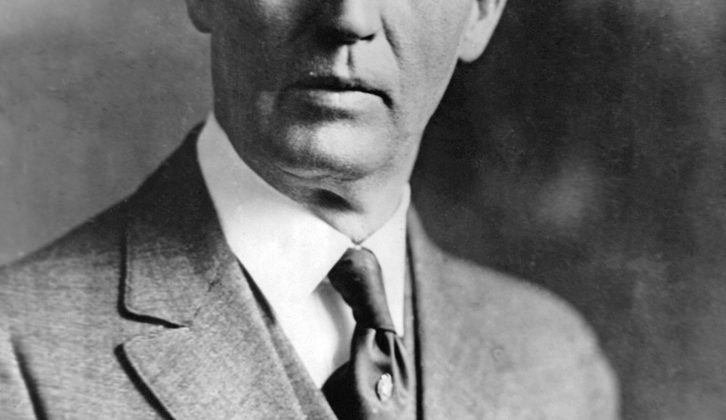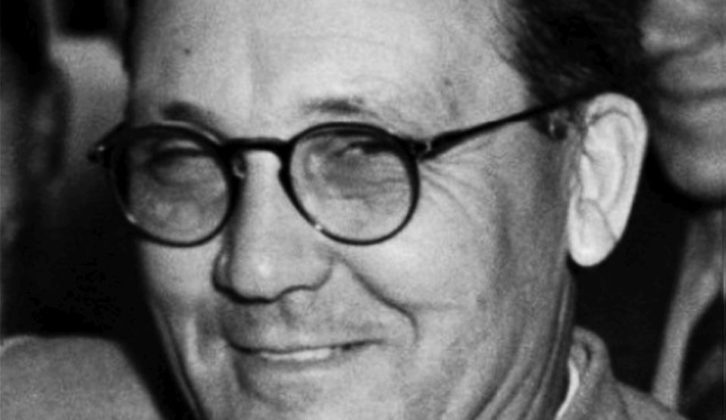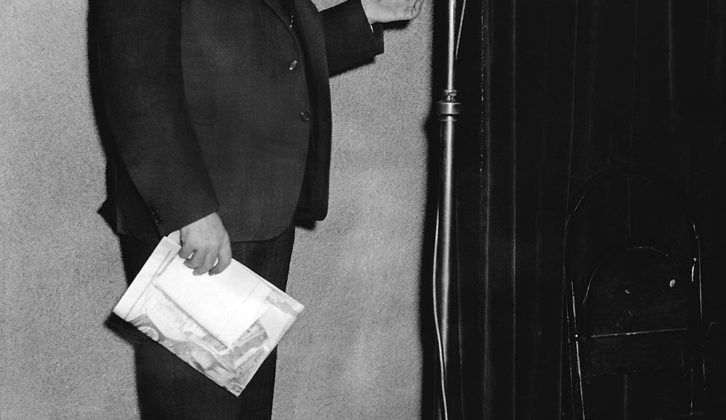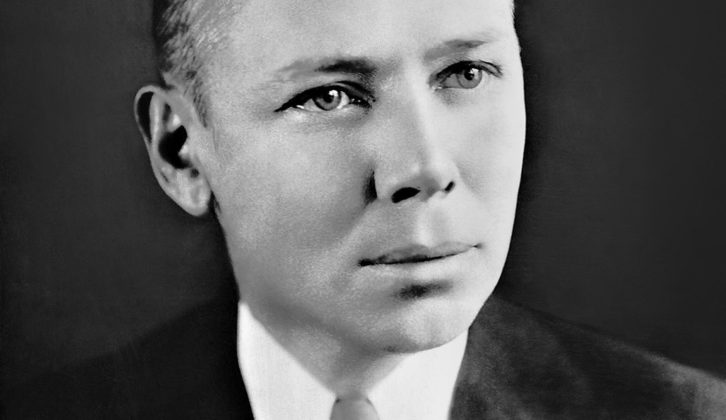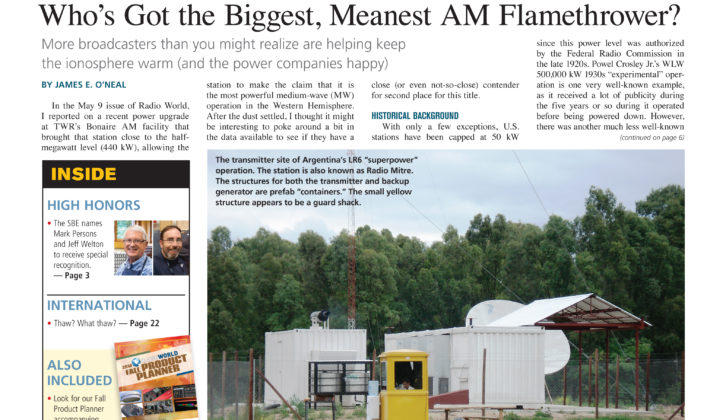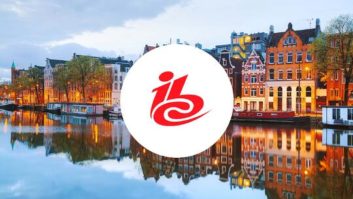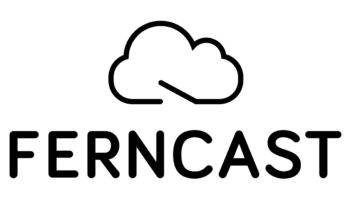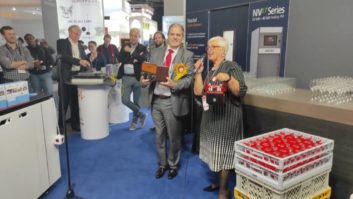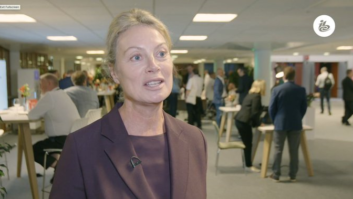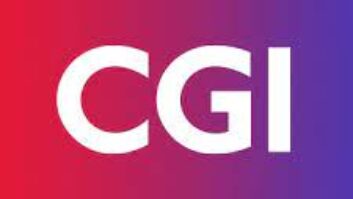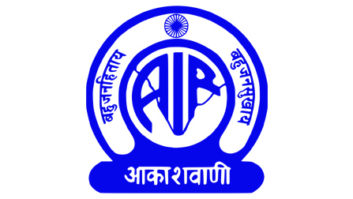AMSTERDAM — The statistics for the annual IBC Show in Amsterdam are always impressive: organizers claim over 57,000 visitors to the RAI Convention Center’s 15 halls, which feature over 1,700 companies across 50,000 square meters of exhibition space, meaning sore feet are almost inevitable after a visit. IBC is described as “the world’s most influential media, entertainment and technology show.”
Across the busy arenas, the growing presence of companies such as Google, Facebook and Amazon is noticeable. However there remains a thriving section of radio exhibitors, centered on Hall 8, with established and newer companies demonstrating every aspect of radio station technology, from microphones and playout systems, to broadcast monitoring and transmission.
Robert Gordon Duncan, the “Oregon Wildcat,” broadcast over Portland’s KVEP from 1929 until his station license was revoked in 1930.
Author’s collection
Evangelical Minister Robert P. “Fighting Bob” Shuler, pastor of the Trinity Methodist Church in Los Angeles, lost his license for KGEF in 1932 for broadcasting slanderous attacks on public officials and others. Shuler fought the decision unsuccessfully for three years, ultimately as far as the Supreme Court.
Wikipedia Commons photo
Father Charles Coughlin, the crusading radio commentator of the 1930s, was the forerunner of Rush Limbaugh and other modern talk radio hosts. The controversial Catholic priest was heard nationwide from 1926 until he was forced off the air in 1939.
Author’s collection
Gerald Buckley, evening commentator on WMBC in Detroit in 1930, exposed the corruption in city government and led a successful recall election against Mayor Charles Knowles. The night of the election, he was murdered by gangland assassins.
Author’s collection
Both in the IBC Exhibition’s Future Zone — which showcases new ideas and concept technologies from innovators such as Japan’s NHK and BBC R&D from the United Kingdom — and elsewhere, key themes included the growth of object-based broadcasting, and increased use of Artificial Intelligence (AI). Claiming the first use of AI in FM radio broadcasting, WorldCast Systems launched SmartFM at this year’s show, which uses the technology to reduce energy costs and CO2 emissions arising from transmission.
Spatial Audio was also popular for both video and pure audio use, with Zoom launching its new H3-VR virtual reality audio recorder, described as the only recorder that can capture and decode spatial audio in one device. The unit includes a four-capsule Ambisonics mic and onboard A/B decoder, allowing it to capture four channels of spatial audio, which can then be automatically converted to be compatible with 360-video.
Leading industry organizations were also well-represented. The EBU stand showcased innovative technologies developed by broadcasters for broadcasters, including 5G distribution systems, and UHD content with Next Generation Audio (NGA) produced at the European Championships.
On the Nautel booth, Digital Radio Mondiale’s chair, Ruxandra Obreja, provided an update on digital roll-out in India. It’s reported that the country’s public broadcaster, AIR, has announced its support for the deployment of DRM in VHF Band II. The government’s decision regarding the digitization of Band II is forthcoming.
Meanwhile, at the IBC Conference, WorldDAB — the global industry forum for DAB digital radio — led a session on “Radio’s Digital Strategy,” exploring how radio can deliver new content to the listener, in today’s new landscape that includes Google, Amazon, Sonos and Apple Music.
Graham Dixon, head of Radio for the EBU, discussed how smart speakers can offer broadcasters the opportunity to bring radio back into the heart of the home, and in the car’s digital dashboard. A global panel session featured Wim Moortgat, manager Audio Technology for Belgian public broadcaster VRT and Joan Warner, CEO, Commercial Radio Australia, who discussed how radio is incorporating new technology into its business model — online, via apps, and on digital via DAB+.
Also at the WorldDAB session, Simon Mason — head of Broadcast Radio Technology from transmission providers Arqiva — presented the findings of a recent survey measuring the quality of radio signal over 4G compared to DAB, within selected urban environments and motorways around the U.K., and across peak listening times in selected regions. Mason set out that while mobile is able to provide a complementary service to broadcast radio, to deliver a comparable service over a wide area would require massive investment, and he argued that there was no business case for mobile operators or broadcasters to fund this.
